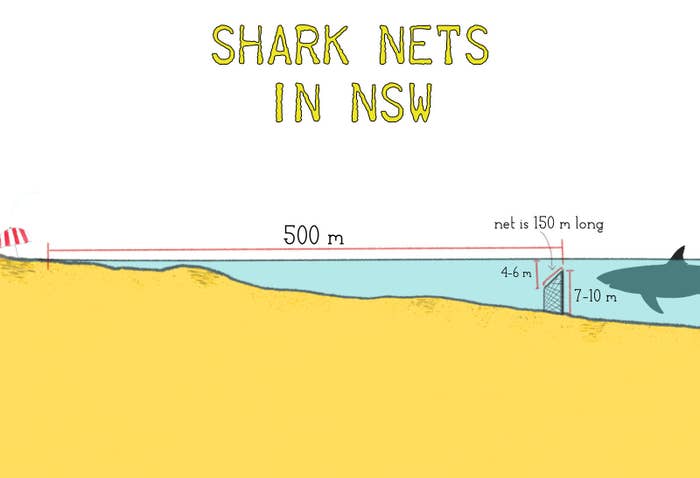Josh Frydenberg, federal minister for the environment and energy, has proposed locations along the Western Australian coastline for 176 SMART drum lines to protect beachgoers from shark attacks.
The proposed drum lines will cover 260 kilometres of coastline, aiming to protect Perth beaches and those to the southwest of the capital, the areas where 11 of Australia's 17 fatal shark attacks in the past 25 years have occurred.
The proposal would cost the Western Australian government $5 to 7 million to implement.
So, do SMART drum lines protect people from shark attacks, and are they really the most effective method?
Shark Nets
Australian beaches have traditionally used shark nets and drum lines as methods to reduce shark attacks.
NSW been Australia's biggest proponent of shark nets since 1937, with 51 beaches from Newcastle in the north to Wollongong in the south using them. By comparison, Queensland only has 11 shark nets currently installed.
The net system was originally designed to be lethal to large sharks, with sharks caught in the nets routinely euthanised and dumped at sea. Now sharks found in the nets with a "reasonable chance of recovery" from injuries are released alive.
The nets are still extremely destructive to marine life. In the 2015-2016 year only 133 of the 748 animals caught by the NSW nets were target sharks.

The second trial of SMART nets (those fitted with electronic dolphin and whale deterrents, sensors, and alerts) in northern NSW in 2017 caught 36 animals in one month, none of which are a threat to humans. Sixteen of those animals (44%) died.
Shark nets are also not known to be particularly effective, as they only cover a distance of 150 metres and animals can move easily around them.
NSW nets also have a gap of 4-6 metres between the top and the ocean surface, which is intended to reduce the threat to vulnerable species such as turtles and dolphins, but which also allows sharks to enter swimming areas.
Drum Lines
Traditional drum lines are used widely in Queensland, with 35 installed down the state's coast. It's a basic system (see illustration) that floats a bait hook using a connected anchor and buoy, and they are designed to be lethal, not allowing caught sharks to swim and breathe.
In 2014, Western Australia trialled these drum lines over three months. No great white sharks (thought to be responsible for most of Australia's fatal shark attacks) were caught and 60% of animals caught died on the hook.
SMART drum lines have been in use since December 2015 are intended to catch sharks for later release. Once caught, an alert is sent to the contractors to release the shark, which is then tagged and towed a kilometre out to sea.
The most recent NSW trial in May of this year found that the SMART drum lines are effective at catching target species, landing 220 great white sharks in one month.
Twenty-one grey nurse sharks – known as the "labradors of the sea" – were also hooked in the trial, but survived.

As a result of this catching and tagging operation, NSW is currently tracking 253 great white sharks and preliminary results suggest that once the sharks have been tagged and relocated they move away from the coast for several weeks.
However, the CSIRO believes there are just under 5,500 great white sharks living off the east coast of Australia, and that the number tracked is just a small representation of that population.
New technologies
Last year the Western Australian Labor government provided subsidies for a trial with the Shark Shield Freedom 7, a personal electronic shark deterrent. The government has given $200 rebates to almost 2,000 Western Australians and in May of this year the program was renewed to provide a further 1,000 rebates.
The device works by emitting an electronic current into the water that confuses the shark's sensing organs in their nose. One trial has shown near 100% effectiveness, with great white sharks turning away at a distance of 1.3 metres.
However, it is still unclear whether the device would be effective in a targeted predatory attack.
Multispectral drone imaging (a military-grade imaging technique that captures more frequencies across the electromagnetic spectrum than our eyes alone) is now being trialled in NSW and WA.
The drones can detect a shark with up to 90% accuracy, while humans in helicopters have shown accuracy of only up to 30%.
